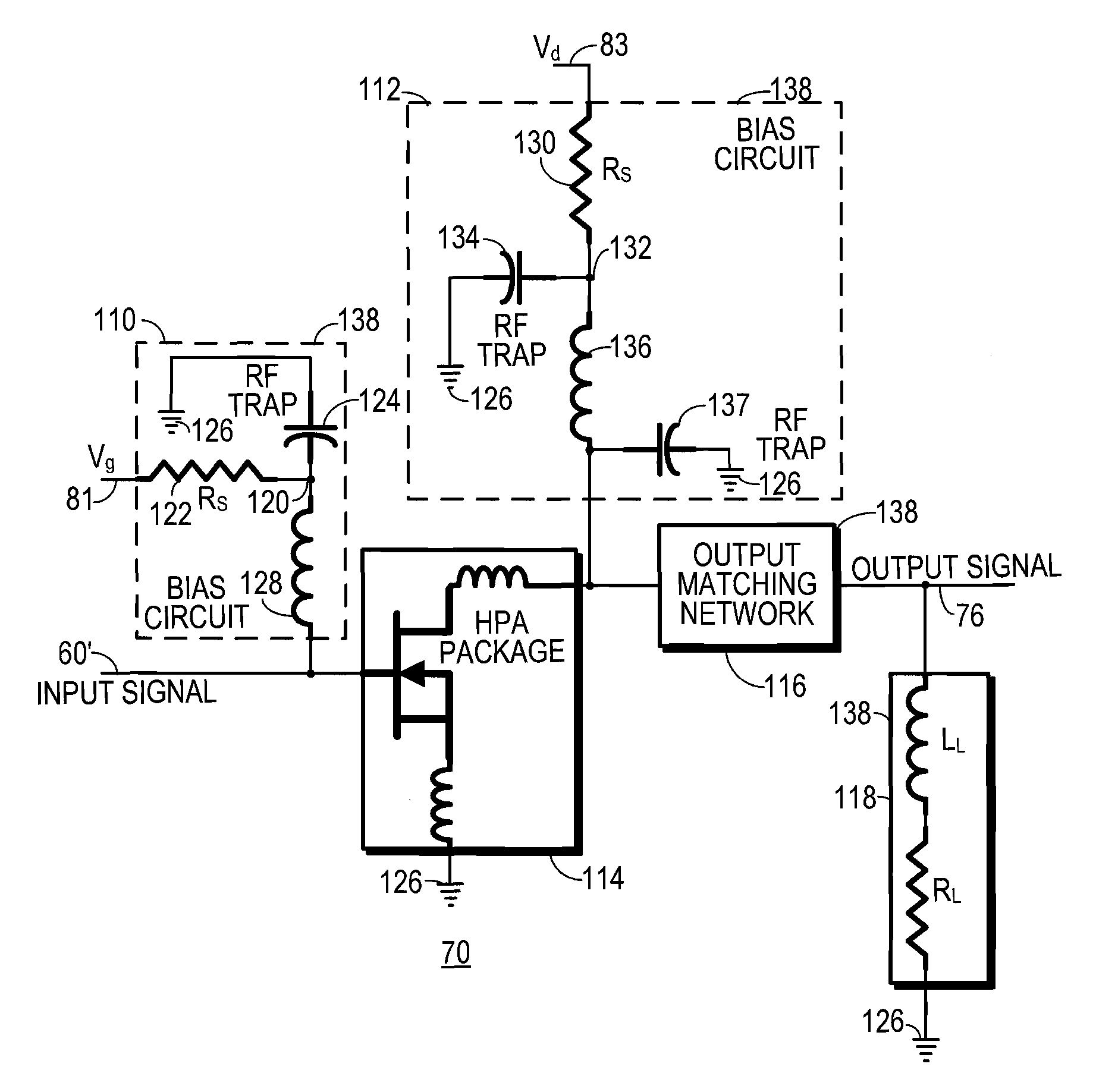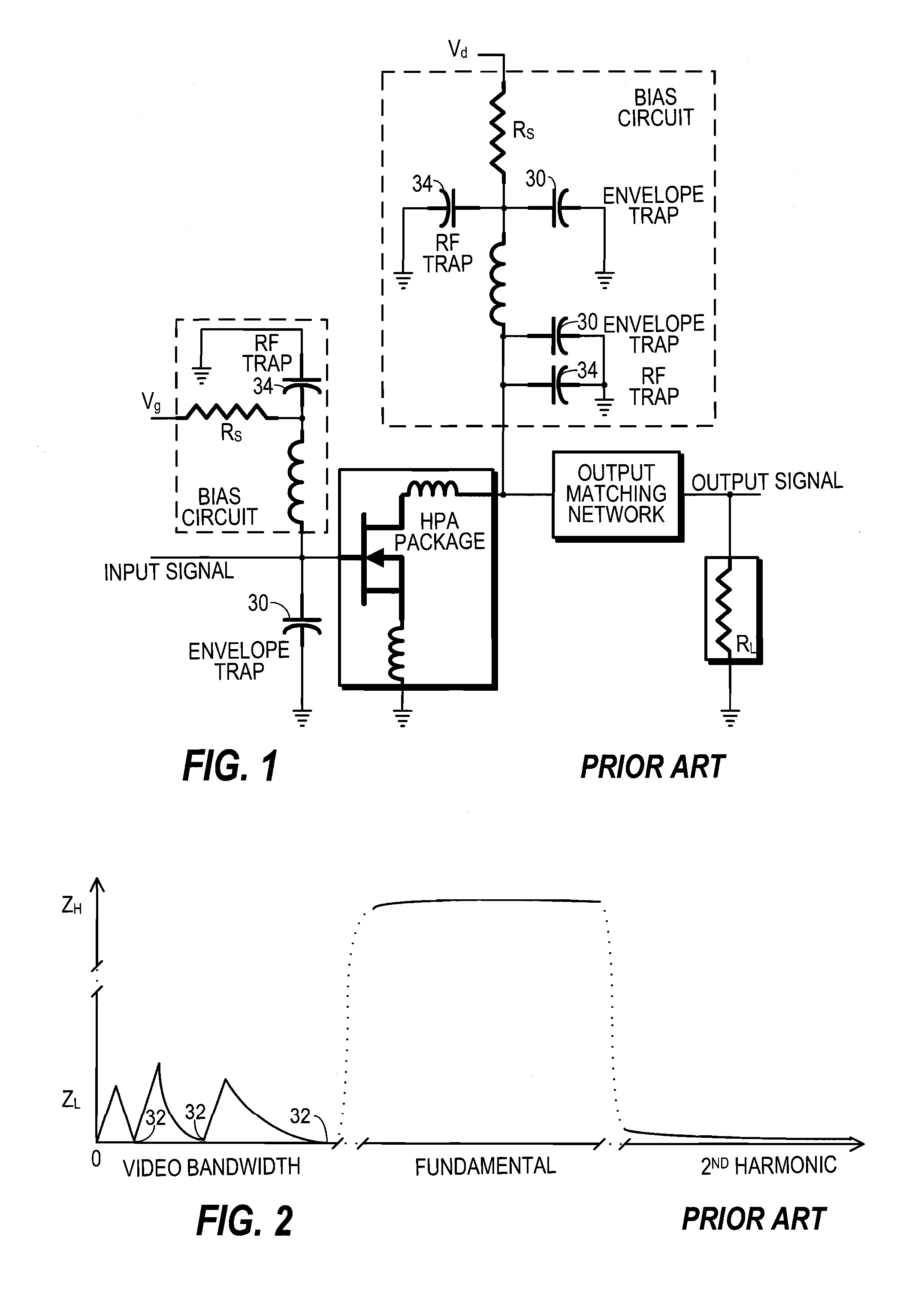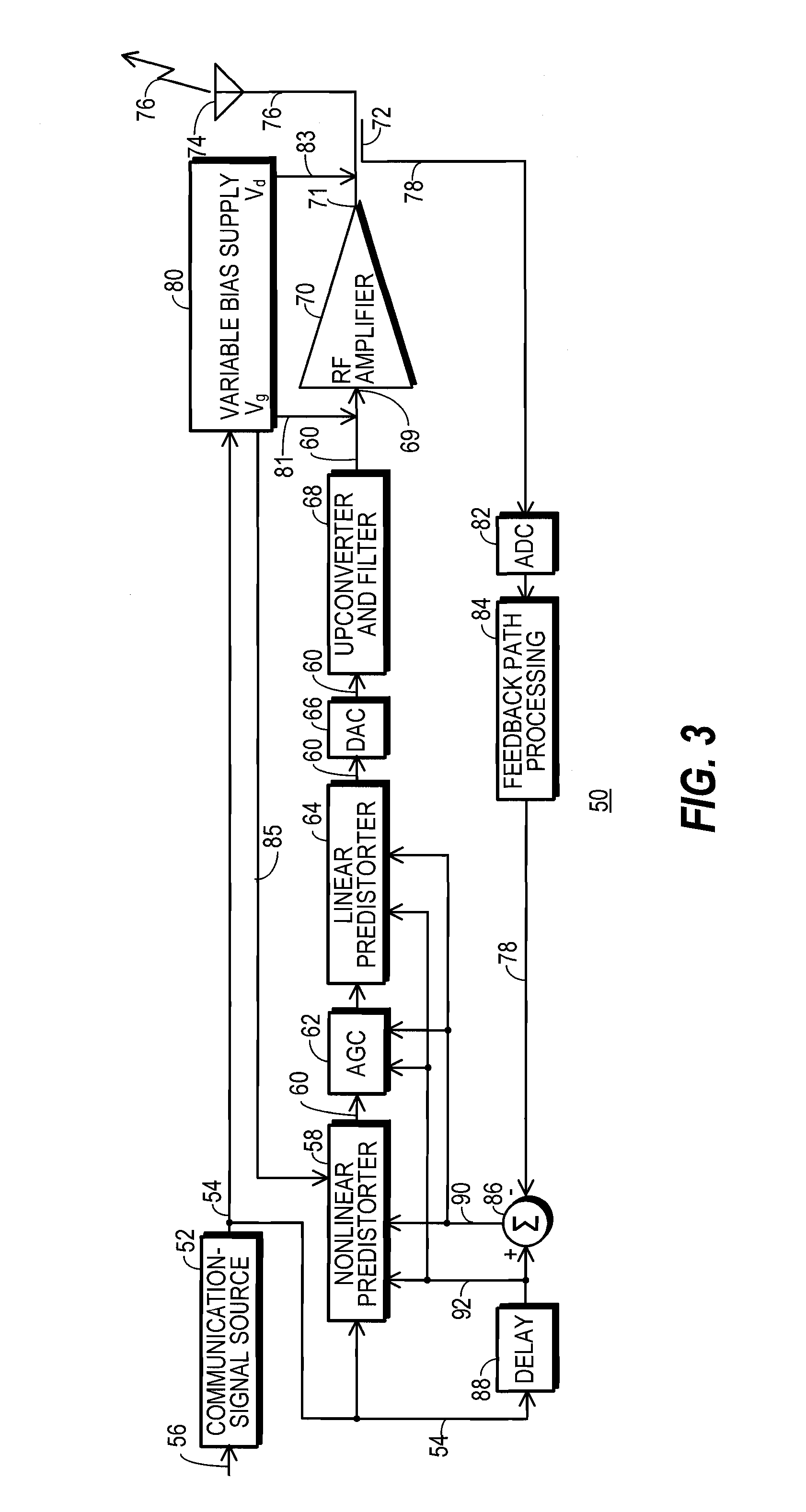Transmitter Linearized Using Look-Up Table With Unadaptable Data and Method Therefor
a linearized, unadaptable technology, applied in the field of predistorters, can solve the problems of transmitters that cannot be successfully operated transmitters that cannot be reliably synchronized with the baseband system, and may fail to achieve the effect of successfully operating within the spectral mask imposed by regulations and/or power specifications,
- Summary
- Abstract
- Description
- Claims
- Application Information
AI Technical Summary
Benefits of technology
Problems solved by technology
Method used
Image
Examples
first embodiment
[0059]FIG. 4 shows a simplified block diagram of transmitter 50 as discussed above and as shown in FIG. 3, but with details concerning nonlinear predistorter 58 shown, with details of a behavioral model 94 for amplifier 70 shown, and with other details omitted.
[0060]The block diagram of model 94 presented in FIG. 4 provides an explanation for the way in which linear and nonlinear influences associated with amplifier 70 appear to behave. Those skilled in the art will appreciate that amplifier 70 is constructed from real components and materials that fail to operate precisely as desired. Accordingly, models, such as model 94, may be devised to explain the manner in which amplifier 70 appears to actually operate. The specific components of model 94 need not be individually observable in a real-world version of amplifier 70.
[0061]Model 94 depicts amplifier 70 as having its overall transfer function partitioned into a linear component 96 and a nonlinear component, referred to herein as a...
second embodiment
[0140]FIG. 11 shows joining and gain-adjusting section 162 of the nonlinear predistorter 58. The FIG. 11 embodiment represents a simplification over the FIG. 10 embodiment, and it requires fewer complex multiply operations and consumes correspondingly less power. The FIG. 11 embodiment is suitable for use when processing section 156 (FIGS. 4 and 9) configures transform FML2 with FML1−1 to provide a better estimate of the combined inverse of FML1 in parallel with FML2 than is provided by FML1−1 alone. In this embodiment, alternate error signal 90′ is supplied to derivative neutralizer 220 (FIG. 9).
[0141]In this FIG. 11 embodiment, gain-correcting signal 160 generated through the application of transform FML2 is viewed as an offset to gain-correcting signal 158, which is generated through the application of transform FML1−1. But nothing requires FML1−1 for this embodiment to precisely equal FML1−1 for the other embodiment or to precisely equal the inverse of gain-droop component 146 c...
fourth embodiment
[0160]FIG. 15 shows a block diagram of predistorter 58. In the FIG. 15 embodiment the above-discussed parameters that drive or may drive address inputs to adaptable LUT 282 have been combined to reduce the size of LUT 282. As in FIG. 13, FIG. 15 drops the complex signal notation used above in FIGS. 8-11.
[0161]The FIG. 13 embodiment of predistorter 58 uses up to five different, albeit related, parameters to independently drive up to five different address inputs of LUT 282, where each of the five different address inputs may include one or more address bits. The five different parameters may be grouped into two different groups. Each parameter in one group of parameters is proportional to different modulations of Vgs (FIG. 14). This group of parameters includes magnitude parameter 152 and variable gate bias parameter 81′. Each parameter in another group of parameters is proportional to different modulations of Vds (FIG. 14). This group of parameters includes magnitude derivative para...
PUM
 Login to View More
Login to View More Abstract
Description
Claims
Application Information
 Login to View More
Login to View More - R&D
- Intellectual Property
- Life Sciences
- Materials
- Tech Scout
- Unparalleled Data Quality
- Higher Quality Content
- 60% Fewer Hallucinations
Browse by: Latest US Patents, China's latest patents, Technical Efficacy Thesaurus, Application Domain, Technology Topic, Popular Technical Reports.
© 2025 PatSnap. All rights reserved.Legal|Privacy policy|Modern Slavery Act Transparency Statement|Sitemap|About US| Contact US: help@patsnap.com



